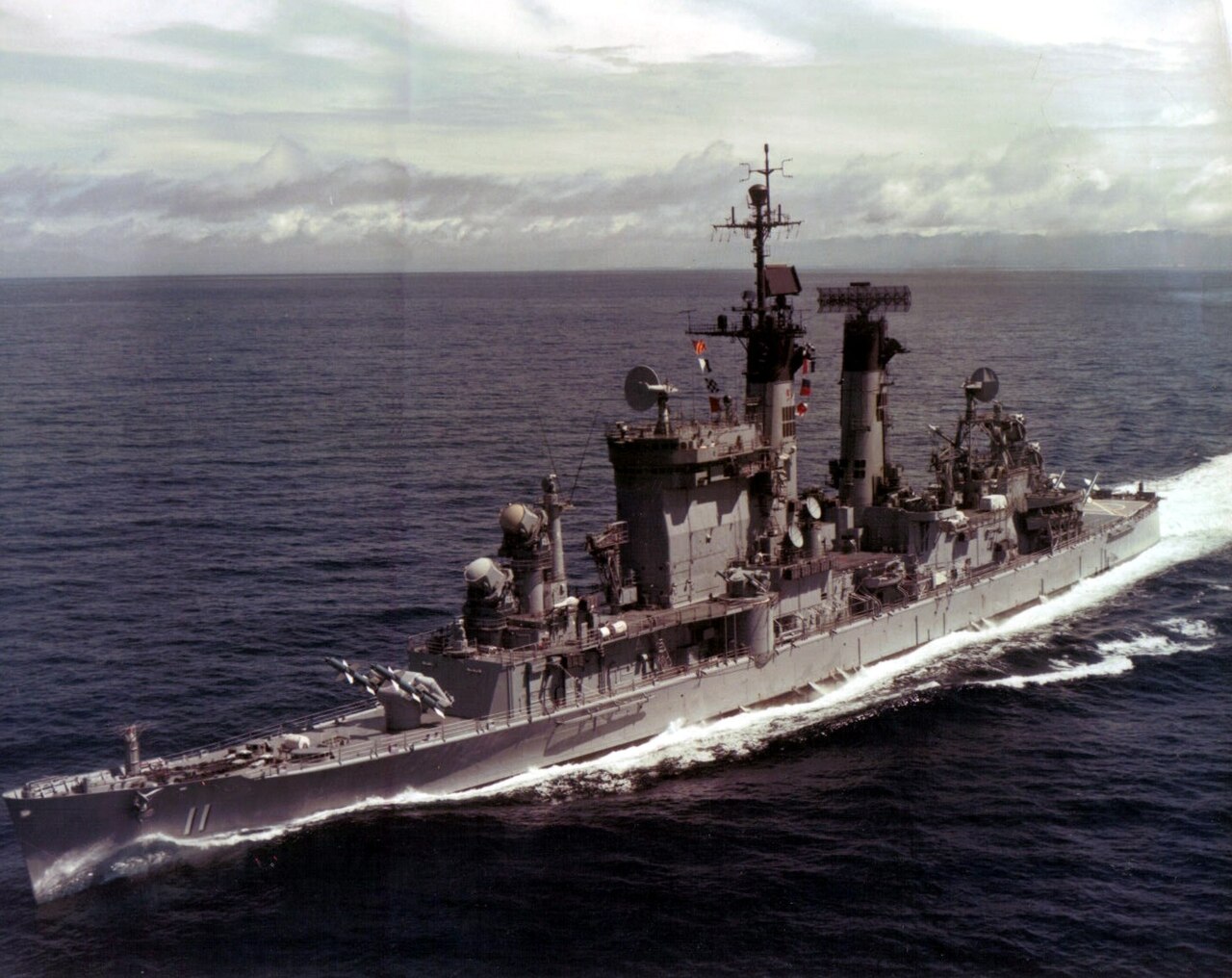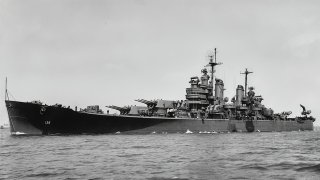Baltimore-Class: What Made These U.S. Navy Cruisers a Real Powerhouse
Like many other U.S. Navy warships, most Baltimore-class heavy cruisers had relatively short service lives. However, four vessels were refitted and converted into the world's first guided missile cruisers.
Heavy Duty: Meet the Baltimore-class - Though perhaps not as famous as the United States Navy's Iowa-class battleships – and certainly not built in as great of numbers as the Essex-class aircraft carriers, the Baltimore-class heavy cruisers were employed during the Second World War to protect the fast carriers in battle groups from air attack. In addition, their 8-inch (203mm) main guns and secondary 5-inch (127mm) guns were employed to bombard land targets in amphibious landings.
Based partly on the Cleveland-class light cruiser, but with larger guns in three turrets to the 6-inch guns in four triple turrets, a total of fourteen Baltimore-class heavy cruisers were completed – more than any other class of heavy cruisers built.
They were also the first cruisers to be constructed for the United States Navy without the limitations of the London Naval Treaty.
According to Jane's Fighting Ships of World War II, the warships had a displacement of 13,600 tons and a complement of 1,700 sailors. At 673.5 feet in length and a beam of 69 3/4 feet with 6 to 8-inches of side armor, the Baltimore-class was longer and more heavily armored than the Royal Navy's HMS Dreadnought, the warship that had ushered in the age of the battleship just a generation earlier. For their era, the Baltimore-class heavy cruisers were almost as capable as Germany Panzerschiffe (pocket battleships).
Moreover, the heavy cruisers were fast vessels that that could reach a top speed of 33 knots while they still pack a considerable punch – armed with nine 8-inch (55 caliber) main guns, and full dozen 5-inch (38 caliber) guns.
To aid in screening the carriers and keep the heavy cruisers protected, the Baltimore-class was further equipped with forty-four 40mm and twenty-two to twenty-eight 20mm anti-aircraft guns.
Not a single one was lost in combat. However, the USS Canberra (CA-70) was seriously damaged after being struck by a Japanese air-dropped torpedo in October 1944, which killed 23 men in the engine room and left the heavy cruiser immobilized. Her sister ship USS Boston (CA-69) towed her back to port – and a result neither ship was present at the Battle of Leyte Gulf.
However, it should be noted that none of the Baltimore-class actually saw surface combat, as they were employed as escorts for carrier task forces. They were also expensive warships for the era, costing roughly $40 million apiece.

Baltimore-Class: Cold War Conversion
As with many other U.S. Navy warships, most of the Baltimore-class heavy cruisers had relatively short service lives. However, four of the vessels were refitted and converted in the world's first guided missile cruisers.
USS Columbus (CA-74) became CG-12 and USS Chicago (CA-136) became CG-11 of the Albany -class. Along with the lead vessel, the converted CA-123/CG-10 – the former Oregon City-class, a modified version of the Baltimore-class, heavy cruiser – these vessels were armed with two Mark 12 RIM-8 Talos missile launchers, two Mark 11 RIM-24 Tartar launchers and one Mark 16 RUR-5 ASROC launcher, along with just two of the original 5-inch (38-caliber) guns.
USS Boston (CA-69) was modified as the lead vessel (CAG-1) of the Boston-class guided missile cruiser, while USS Canberra (CA-70) became CAG-2. These warships retained two of the triple 8-inch guns, and five of the dual 5-inch guns, while they were also equipped with two dual Mark 4 RIM-2 Terrier missile launchers. In addition, the Boston-class was also fitted with a helipad.
These warships remained in the fleet throughout the Cold War – including service in Vietnam. USS Chicago was decommissioned in 1980, and remained in the reserve fleet until 1989. She was sold for scrap in late 1991, the final vessel of the Baltimore-class of heavy cruisers.
Author Experience and Expertise: Peter Suciu
Peter Suciu is a Michigan-based writer. He has contributed to more than four dozen magazines, newspapers, and websites with over 3,200 published pieces over a twenty-year career in journalism. He regularly writes about military hardware, firearms history, cybersecurity, politics, and international affairs. Peter is also a Contributing Writer for Forbes and Clearance Jobs. You can follow him on Twitter: @PeterSuciu. You can email the author: [email protected].
All images are Creative Commoms.


